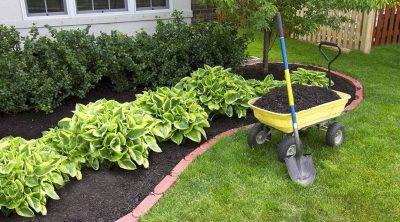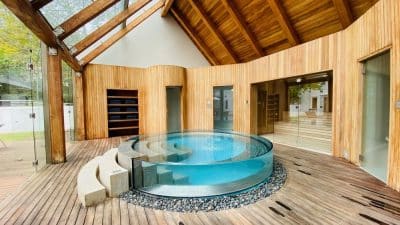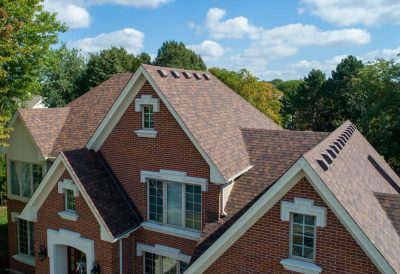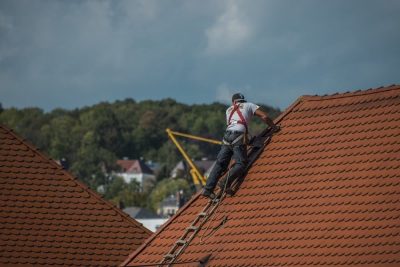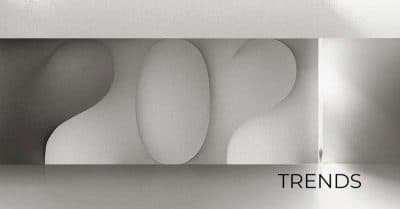
Aluminium cladding is a staple in modern architecture, known for its versatility, durability, and sleek appearance. But what exactly is it, and why has it become such a popular choice in both commercial and high-end residential construction? In this article, we’ll delve into the world of aluminium cladding, exploring its material properties, common applications, and the myriad benefits it offers.
What Is Aluminium Cladding?
At its core, aluminium cladding involves covering a building’s exterior with panels made from aluminium. This metal is lauded for its lightweight nature, robustness, and resistance to corrosion, making it an ideal choice for safeguarding a structure against the elements. It’s not just about protection; aluminium cladding also adds a modern, aesthetic appeal to buildings, with its sleek lines and smooth finish.
Common Applications of Aluminium Cladding
Aluminium cladding serves a wide range of applications in the construction industry. Commercially, it’s often seen gracing the exteriors of shopping centres and office buildings, offering a contemporary look while providing essential protection from the weather. It’s also a common sight at bus and train stations, where it’s used to create shelters that are both functional and visually appealing.
While it’s more prevalent in commercial projects, aluminium cladding is also making strides in the high-end residential market, albeit to a lesser extent. Its ability to elevate a property’s aesthetic while offering long-lasting durability makes it a sought-after material for luxury homes.
The Benefits of Aluminium Cladding
1. Durability and Longevity: Aluminium is renowned for its strength and resistance to environmental factors such as rust, corrosion, and UV damage. Cladding made from aluminium ensures that buildings can withstand the test of time, maintaining their integrity and appearance for years to come.
2. Lightweight: Despite its durability, aluminium is surprisingly lightweight, which simplifies the construction process. It puts less stress on the building’s structure, making it an excellent choice for both new builds and renovations.
3. Low Maintenance: Aluminium cladding requires minimal upkeep. It does not necessitate frequent painting or treatment to maintain its appearance and functionality, saving time and resources in the long run.
4. Energy Efficiency: Aluminium cladding can improve a building’s thermal performance, reducing the need for heating and cooling. This not only cuts down on energy costs but also contributes to a more sustainable building practice.
5. Aesthetic Flexibility: With a variety of finishes and colours available, aluminium cladding offers unmatched aesthetic versatility. It can be tailored to complement any architectural style, from the sleek and modern to the more traditional.
6. Fire Resistance: Aluminium is non-combustible, meaning it does not burn. This property makes aluminium cladding a safe choice for buildings, contributing to overall fire safety standards.
7. Recyclability: In today’s environmentally conscious world, the recyclability of construction materials is more important than ever. Aluminium cladding scores high in this aspect, as it is 100% recyclable without loss of quality, making it a sustainable choice for eco-friendly construction projects.
Why Architects and Engineers Prefer Aluminium Cladding
Aluminium cladding is a popular choice among architects and engineers for several compelling reasons. Its flexibility in design allows for innovative architectural expressions, enabling creators to achieve a wide range of looks from futuristic to minimalistic.
The material’s lightweight nature also appeals to structural engineers, who prioritize the integrity and longevity of the building’s framework. Furthermore, aluminium’s ease of installation and adaptability to various environmental conditions make it a go-to option for projects requiring durable, yet aesthetically pleasing exterior solutions.
This popularity is underscored by the material’s sustainability features. The recycling potential of aluminium cladding aligns with the growing demand for green building materials, making it an environmentally responsible choice. Its energy-efficient properties further bolster its appeal, offering tangible benefits in the form of reduced operational costs and a smaller carbon footprint.
Commercial Applications of Aluminium Cladding
In the commercial realm, aluminium cladding shines in its ability to combine functionality with aesthetic appeal. Shopping centres and modern office buildings often employ aluminium cladding to create striking exteriors that stand out while offering protection against weathering and wear. Its use in transportation hubs like bus and train stations exemplifies its durability and low maintenance, providing passengers with a shelter that is both effective and pleasing to the eye.
Although aluminium cladding is predominantly used in commercial settings due to its practical benefits and cost-effectiveness, its application in high-end residential construction is growing. It’s valued for its ability to deliver a contemporary look and feel, elevating the overall design of luxury homes. However, it’s worth noting that while aluminium cladding is a fantastic option for many projects, its use in residential settings is less common, and often reserved for those seeking a modern and minimalistic aesthetic.
Conclusion
Aluminium cladding is more than just a building material; it’s a versatile solution that offers a blend of durability, efficiency, and beauty. Its applications in commercial construction showcase its practical benefits, while its growing presence in the residential market speaks to its aesthetic appeal.
Whether it’s protecting a bustling shopping centre, enhancing the sleek lines of an office building, or adding a contemporary touch to a luxury home, aluminium cladding is a choice that offers both form and function. As construction techniques evolve and the demand for sustainable, efficient materials grows, aluminium cladding stands out as a smart, stylish choice for modern architecture.

